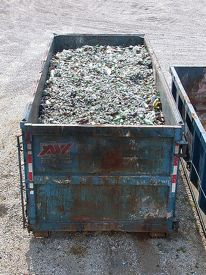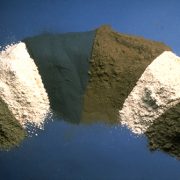Recycling glass is good for the environment
Recently, we discussed the trend in some major cities to eliminate glass from their curbside recycling programs. The rationale for eliminating glass was primarily economic: glass takes up a lot of space in recycling storage facilities that could be used to house other materials. Glass is heavy, and difficult to transport. Glass is dangerous, because workers can get cut on broken glass. In addition, container glass needs to be sorted by color prior to recycling. Finally, when it comes down to it, glass is inert, and can sit in a landfill indefinitely without harming the environment. It’s a higher priority to keep other, more dangerous items out of the landfill, and if the warehouse space can be used for these other, more dangerous materials, then it’s a fair tradeoff.
Recycling glass takes less energy
You can probably come up with even more reasons NOT to recycle glass, but nothing changes the fact that glass is perfectly recyclable. A finite amount of glass could be produced, melted down and reproduced in a continuous cycle, with no loss in the quality of the end product. Recycled glass takes less energy to melt down and recreate than it takes to produce virgin glass entering the product stream from raw materials.
Glass is superior to plastic or other disposable packaging materials (or building materials, for that matter) because it bears the designation “generally recognized as safe” (GRAS). What you put into a glass container will not change the container, and the container will not change the substance inside of it. The same can’t be said for plastic packaging, which has been demonstrated as a source of contamination. This is especially important for food packaging, and products that are meant to come into contact with food, like cups, plates and utensils.
It takes a lot of energy to create glass from scratch. Furnaces, which run on gas or electricity, need to consume a lot of energy to create the temperatures needed to turn raw materials into their molten state. It takes about one-third less energy to recycle one ton of glass than it does to convert raw materials into one ton of virgin glass.
In glass recycling, it’s typical to mix used glass with new glass to create a hybrid product. From a product quality perspective, there’s no reason “old” glass couldn’t be used entirely to make new containers, and the Glass Packaging Institute (GPI) set a goal for its members to use at least 50% recycled glass in their production processes by 2013. Practically, it’s possible to make new glass using 95% reclaimed glass and 5% new raw materials. The 5% drop is accounted for by contamination and other factors. Scrap glass, called cullet, is typically broken into pieces, but some pieces end up being too small (even dust-like) to be recycled.
A city’s decision to collect or not collect container glass is based on the economics of transporting, sorting and storing glass. Taken over the lifecycle of the glass, even with increased storage, sorting and transportation costs, recycled glass still makes both economic and environmental sense.
If you’d like more information about decorating with environmentally friendly glass, please check out the rest of our site. If you’d like to purchase Glassprimer™ glass paint, please visit our online store .
Photo Credit: Eric Bartholomew, via Flickr.com








